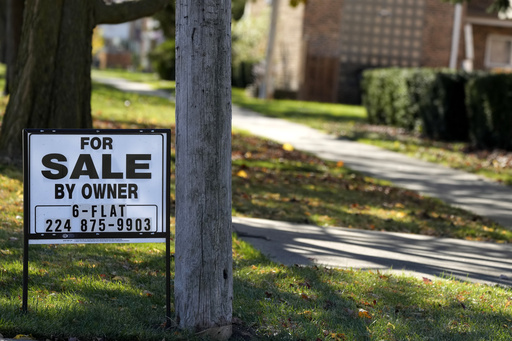
The average interest rate for a 30-year mortgage in the United States has experienced a decrease for four consecutive weeks, offering optimism for those looking to purchase homes as the spring housing market begins.
The latest data from Freddie Mac indicates that the average rate slipped to 6.87%, down from 6.89% the previous week. This figure contrasts with last year’s average of 6.77%.
Conversely, the average rate for 15-year fixed-rate mortgages, often sought by homeowners aiming to refinance, saw a slight increase this week. It rose from 6.05% to 6.09%, whereas it was 6.12% during the same week last year, according to Freddie Mac.
Multiple factors contribute to mortgage rates, notably the fluctuations in the bond market in response to the Federal Reserve’s decisions regarding interest rates. The average rate for a 30-year mortgage had previously dipped to a two-year low of around 6.85% in December but has mostly maintained a position near the 7% mark throughout the year. This level is significantly higher than the record low of 2.65% recorded a little over four years ago.
The combination of rising home prices and persistent mortgage rates, which can lead to increased monthly payments for borrowers, has kept many would-be homebuyers from entering the market. This is particularly challenging for first-time buyers who lack the equity from an existing residence to assist in purchasing a new property.
Last year’s sales of previously owned homes in the U.S. dropped to their lowest levels in nearly three decades, continuing a downturn in home sales that started in 2022 as mortgage rates began to rise from their pandemic-induced lows.
Notably, the current average for a 30-year mortgage is the most favorable since late December when it stood at 6.85%. The recent dip in rates corresponds with a decline in the 10-year Treasury yield, which lenders often reference for home loan pricing.
The yield had surged to 4.79% a few weeks prior, fueled by concerns over persistently high inflation amidst a robust U.S. economy and various proposed tariffs and policies. A recent report indicated that wholesale-level inflation was above economists’ expectations, following a similar report regarding consumer-level inflation issued one day earlier.
Despite these inflation reports, Treasury yields have relaxed, dropping to 4.54% during midday trading. It seems the current inflation climate will prevent any significant decrease in mortgage rates. High inflation prompts bond investors to seek better returns, which can apply upward pressure on the 10-year Treasury yield. Additionally, the Federal Reserve is adopting a more cautious stance as it assesses inflation trends and prospective governmental policies.
In its last meeting, the Fed opted to hold its benchmark interest rate steady after previously implementing three consecutive cuts. Although the Fed does not directly set mortgage rates, its decision implies that mortgage rates are unlikely to see drastic changes soon.
Economists have projected that the average rate on 30-year fixed mortgages will likely stay above 6% throughout this year, with some estimates suggesting it may peak as high as 6.8%. Lisa Sturtevant, chief economist at Bright MLS, anticipates that both buyers and sellers should prepare for mortgage rates to remain in the upper 6% range as they navigate the spring housing market.

